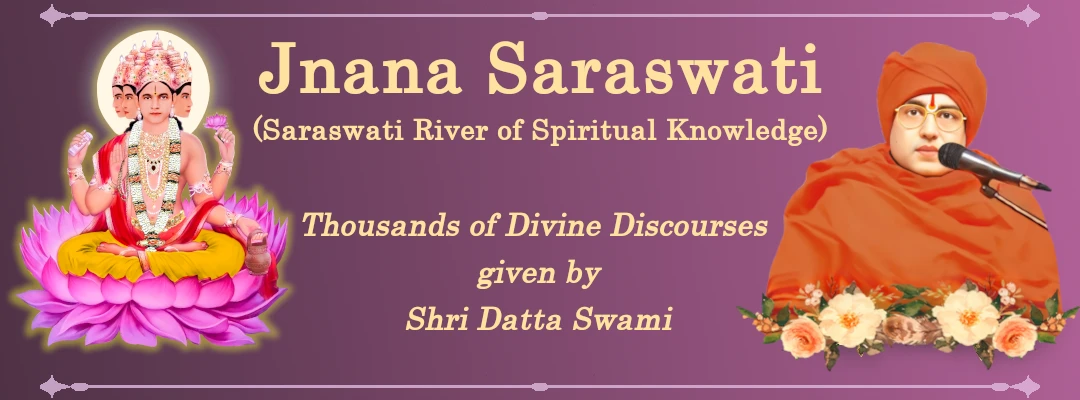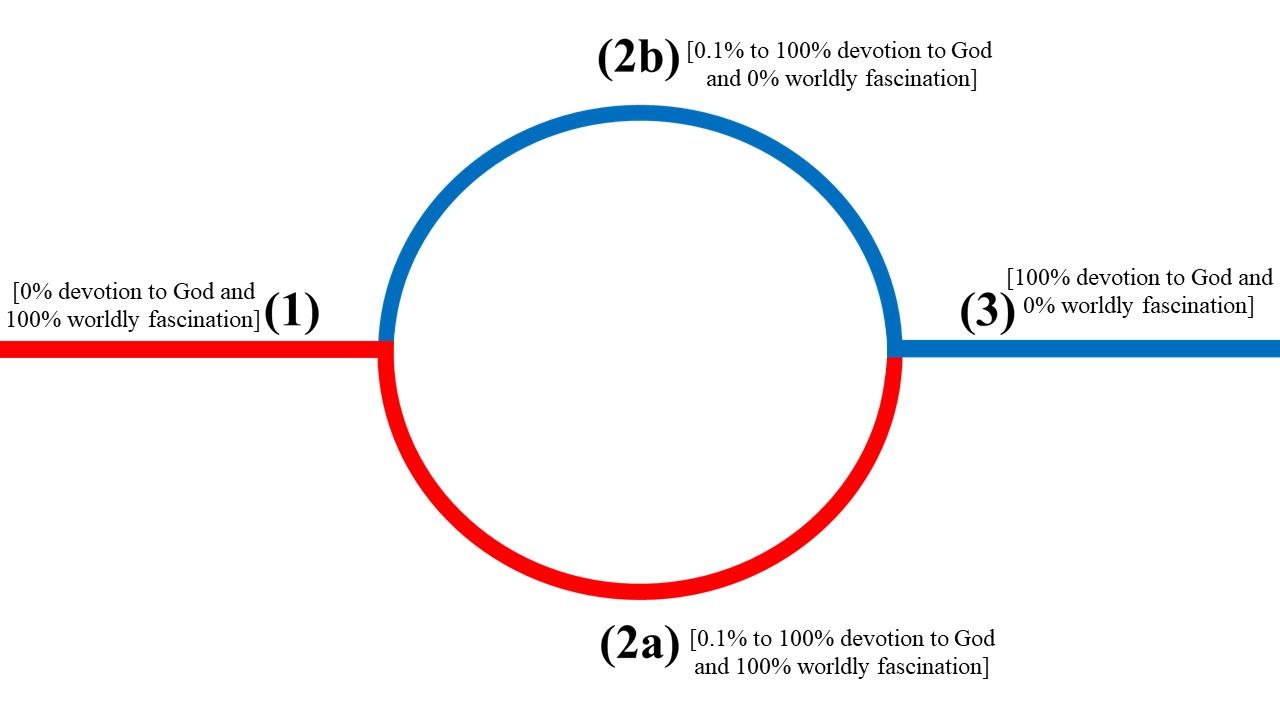
25 Jun 2024
[Ms. Thrylokya asked:- Swami, recently while answering Shri Soumyadip Mondal (Ref.ii of discourse. Click here), You told that there are three types of people. Is it a single path like a straight line divided into three steps?]
Swami replied:- You have asked a good question. There are three types of people:-
(1) Worldly people:- 0% devotion to God and 100% worldly fascination – fixed ratio. These people will go to heaven or hell or both generally, based on their good and bad deeds.
(2) Middle people:- 0.1% to 100% devotion to God and 100% to 0.1% worldly fascination – variable ratio. These middle people are again divided into two sub-types:-
(a) Worldly devoted people:- have both devotion to God and worldly fascination. These people actually have worldly fascination only and their devotion to God is instrumental devotion in which they use God as an instrument to fulfill their worldly fascinations only.
(b) God devoted people:- have only devotion to God without a trace of fascination to the world. Hence, they do not aspire for any selfish desire while living on the earth or after death (like aspiring for heaven and escaping from hell, etc.). Their devotion is goal devotion, which is based on the attraction towards God’s divine personality only. Both (2a) and (2b) types progress from 0.1% to 100% devotion to God, but their basic intentions are different since the intention of (2a) type is only worldly fascination whereas the intention of (2b) type is fascination to God only.
(3) Climax devoted people:- 100% devotion to God and 0% worldly fascination – fixed ratio. These people reach God and become very close with God. Only (2b) type can enter the 3rd type. (2a) type people cannot enter the 3rd type. This is almost the stage of the goal or the state of the divine fruit. Hence, all the 2nd type people cannot reach the 3rd type. The service and sacrifice may be 100%, but the fascination to the world may also be simultaneously 100%. This means, (2a) type people may do 100% service and sacrifice, but such highest service and sacrifice are not based on the true love to God, but are based on selfish worldly fascination only. For example, Ravana cuts all his heads and sacrificed to God Shiva so that he can get the highest divine power from God Shiva that can be used to become the lord of the world. Hence, merely based on 100% service and sacrifice, you cannot say that devotion is pure. On the contrary, if you see the Gopikas, they also jumped into fire after God Krishna left His body and sacrificed their lives for the sake of God Krishna. But, the Gopikas completely differ from Ravana because the Gopikas sacrificed their lives not to get any divine power from God Krishna since their sacrifice was based only on their true love – personal attraction to God Krishna. Based on intention only, fruit appears because Ravana went to hell and the Gopikas went to Goloka for the same action of sacrifice. Therefore, the conclusion is that you can become very close to God (Saayujyam of dualism, devotee shall aspire this fruit only) or even become God (Kaivalyam of Monism, provided God wishes so). The conclusion is that you can reach the highest divine goal (Saayujyam or Kaivalyam) only based on two points:- 1) Highest service and sacrifice and 2) True love to God based purely on personal attraction without aspiration for any selfish desire. The above explanation is the essence of true and complete spiritual knowledge and hence, every devotee is advised to read this patiently and understand (assimilate) perfectly, which is the divine torchlight in the entire spiritual journey.
Point-1:- Therefore, even if 100% practical devotion (service and sacrifice) mingled with theoretical knowledge and devotion exists, a devotee cannot reach God if there is selfish aspiration from God.
Point-2:- Even if selfish aspiration is absent, devotees cannot reach God if practical devotion is absent (only theoretical knowledge and theoretical devotion exist).
These above two points must be the two eyes of the devotee and the two legs in the spiritual journey.

The above diagram shows two red and blue half moon swords (facing upward and downward directions) joined together one above the other.
The left horizontal red line and middle red curve represent the atheists and worldly theists. Both these are having 100% fascination to world only and 0% fascination to God. (2a) people appear as theists, but internally they are indirect atheists only.
The upper blue curve and the right horizontal blue line represent true devotees (sadhakas) and liberated devotees (siddhas) respectively. The (2b) type people not only appear as true devotees but also are internally true devotees to God. Only (2b) type people can achieve full liberation from worldly bonds and full closeness to God or even oneness with God.
The red line represents internal and external atheism. The red curve indicates external theism and internal atheism. The blue curve and blue line indicate perfect internal and external theism. The (1) type (atheists), which is uniform externally and internally is better than the hypocritic (2a) type (majority so called theists), which is different externally and internally.
★ ★ ★ ★ ★